Table of Contents
Week 4: Biodyes + Biomaterials
The task: Create a natural Biodye & Biomaterials
BIO DYES
The biodying process can be summarised into 4 steps. Because different materials were used ( animal and protein based) different processes had to be used.
1) I prepared 16 pieces in total; 8 Alpaca fibre and 8 linen pieces.
ANIMAL: Boil the material with 2 teaspoons of baking soda
PLANT: Soak the material in soap (neutral pH)
2) Mordant: Some pieces were treated with mordant (to show the difference of using mordant vs. not using it). The materials were weighed in order to determine how much mordant would be used. All material samples of the whole group were boiled with about 2g of mordant. The mordant used was Tartaric Acid
3) Dye: I chose to use beetroot as my dye and I prepared it by cutting up the beetroot very fine (in order to increase surface area). It was then boiled for about 45 minutes. I extracted the dye by sieving out the solid pieces. At this stage I was quite hopeful of making a good dye, as the beetroot liquid was very rich in colour and dark.
4) Modifier: the final step was to add different modifiers. We used vinegar, copper and iron.
Iron: Simmer for 30 minutes with Iron capsules (from a drugstore)
Coppper: Simmer in 200ml copper liquor (which consists of 2/3 vinegar + 1/3 water) for 30 minutes.
Vinegar: Simmer in for 30 minutes
Result: I did expect the result to be a bit more successful but the colour didn't really stay ver well. After the initial dying the pieces were a nice nude pink colour but after the modifying process it changed the colour.

STEP 1: PREPARING THE MATERIAL
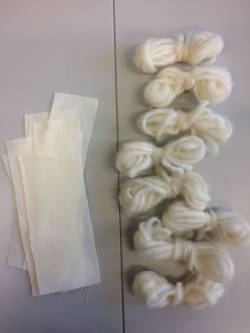 | 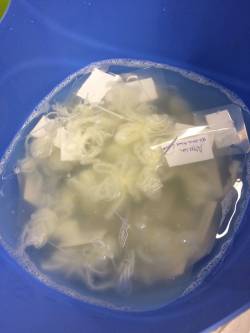 |  |
STEP 2 : ADDING MORDANT
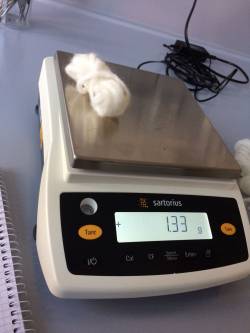 | 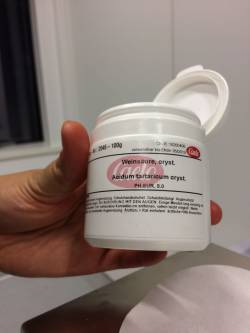 |
The material had to weighed inorder to use the correct amount of mordant
STEP 3: PREPARING THE DYE
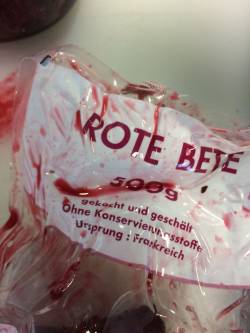 | 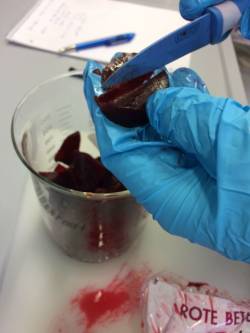 | 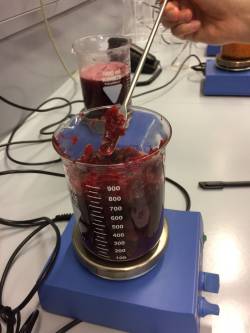 |
 | 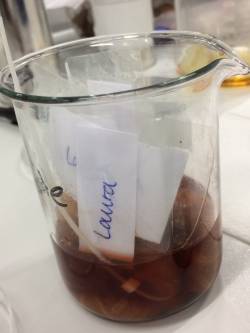 |  |
STEP 4: ADDING MODIFIERS - VINEGAR, COPPER AND IRON
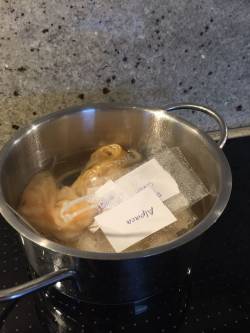 | 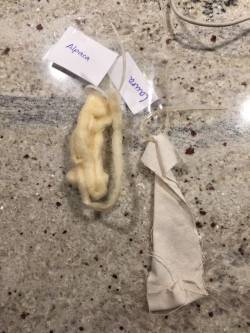 |
BIOMATERIAL
We used simple methods and materials to create biomaterials.
I worked with Pia and Natalia on this task and we created our biomaterial using gelatine and glycerol.
Ingredients:
50ml 1% Glycerine solution
25ml water
1g Gelatine powder
Process
Heat the glycerine and water
Add the gelatine powder
Stir until all the powder is dissolved
Prepare a petri dish with silica spray
Pour into petri dish
Make 4 differnt variations by adding differnt substaneccs e.g good colouring
Our 4 variations : Green food colouring, natural dyes (beetroot) and wool.
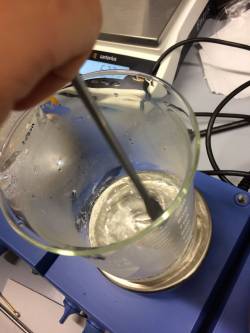 | 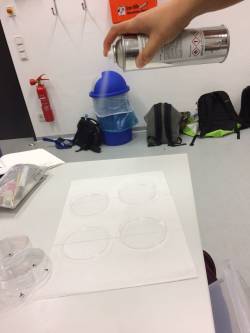 | 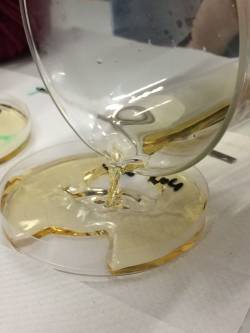 |
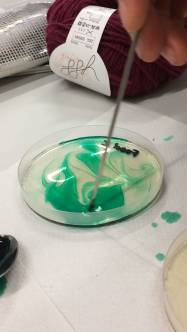 | 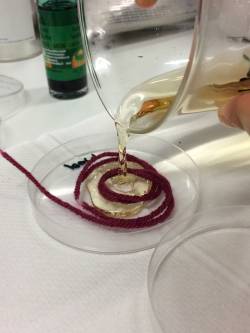 | 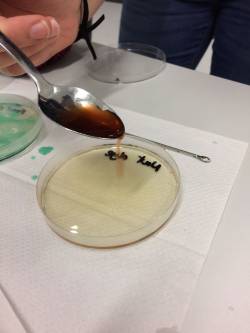 |